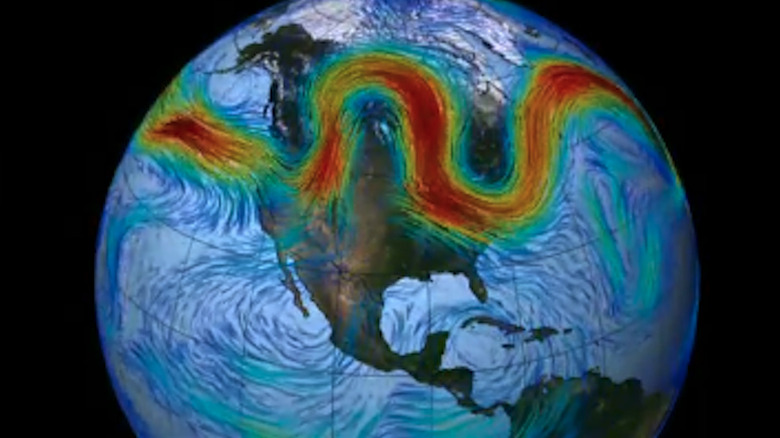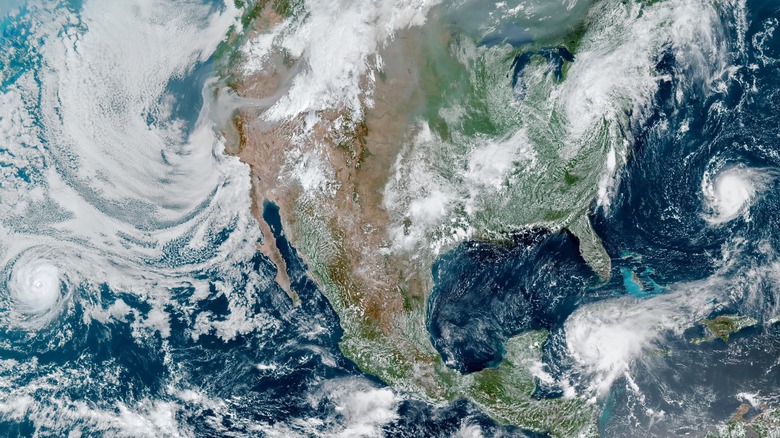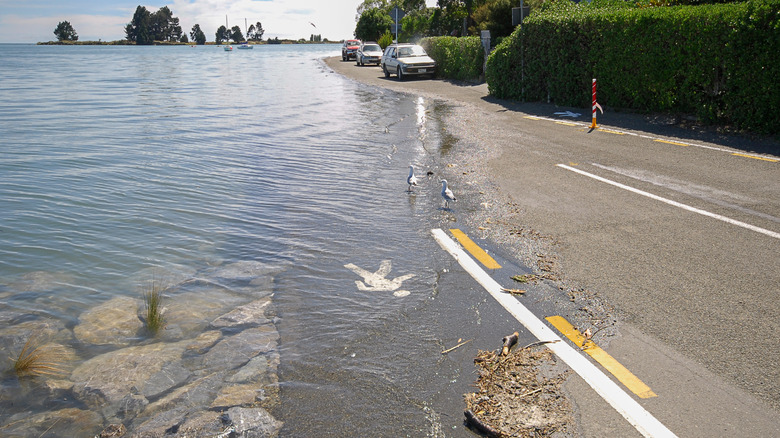What Are Rossby Waves And Why Are They Affecting Our Weather?
You may not have heard of Rossby waves, but they affect the weather on our planet 24 hours a day. Identified and explained by Carl-Gustaf Arvid Rossby, these waves occur due to the rotation of the Earth, according to the National Oceanic and Atmospheric Administration Service (NOAA). Compared to the typical ocean waves we see crashing along shorelines, Rossby waves move remarkably slowly. They are also extremely large, with some spanning hundreds of miles (or more) across the ocean. Generally speaking, Rossby waves travel westward, separating the cold polar air from warmer topical air (per Britannica).
Rossby waves have two components: long waves and short waves. Long waves can range anywhere from 3,700 to 8,000 miles long, and they can be horizontal or vertical. Short waves exist inside the long waves, but they don't always match their direction. Because of this, short waves can change the shape of long waves because they generally travel eastward, according to the National Weather Service (NWS).
Rossby waves have an impact on the atmosphere
Several factors cause Rossby waves to occur. The depth of the ocean, the wave's latitude, and the volatility between the warm and cold layers of the ocean influence the movement of Rossby waves. In addition, different shapes of land masses create irregular temperatures as the sun warms the surface of the Earth. Just as temperature influences Rossby waves, the waves themselves have an impact on the Earth's atmosphere, creating atmospheric Rossby waves. Simply put, warm air from the equator moves toward the poles, and cooler air from the poles moves toward the equator. While this movement is inconsistent, it is fairly regular, and it helps form the jet stream (via NOAA).
Air moving over or around mountains and higher elevations also contributes to the formation of Rossby waves. Wind changes speed or direction in an attempt to restore balance to the constantly-changing atmosphere. But as long as the sun shines and creates heat, the imbalances will remain, per the NWS.
Rossby waves affect our weather
Rossby waves affect weather patterns across the continents because they are so large. But short waves have an impact on weather, too. In fact, they are what the NWS calls the "chief instigator of episodes of precipitation," noting that bands of rain are typically close to them as they pass over sections of the planet. Because long waves move slowly, they can make weather patterns last a long time. The NOAA reports that they can also change weather, noting that they can contribute to rising sea levels and cause coastal flooding in some areas. For example, the effects of El Niño and La Niña waves in the Pacific Ocean take several months to a year to make their way across the ocean, resulting in high tides.
That said, sometimes Rossby waves become stationary, which can play a role in "extreme weather events," per the journal Environmental Research Letters. Moreover, a report published in the journal Nature Climate Change suggests that Rossby waves could cause heat waves and flooding in the northern hemisphere.


